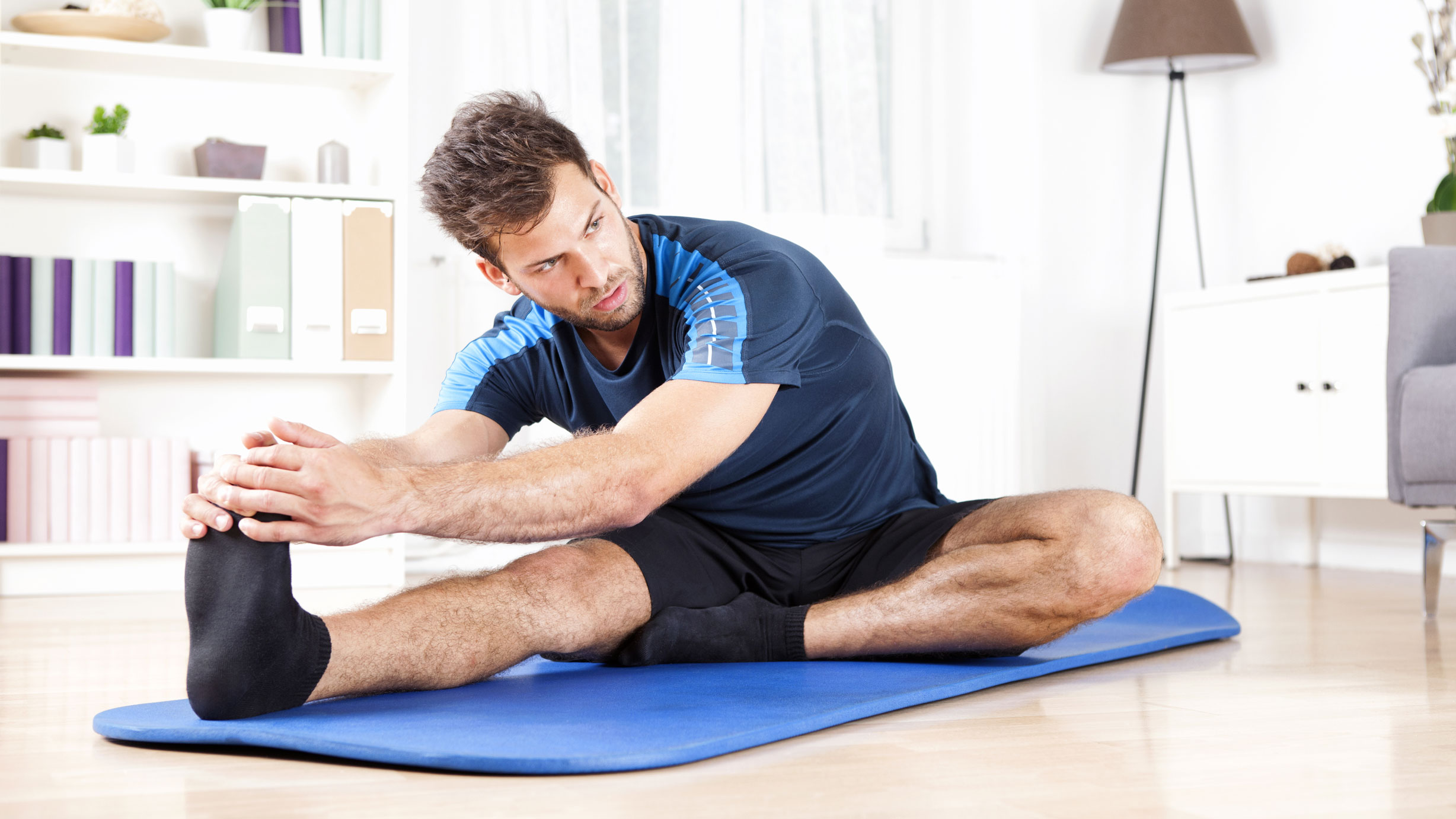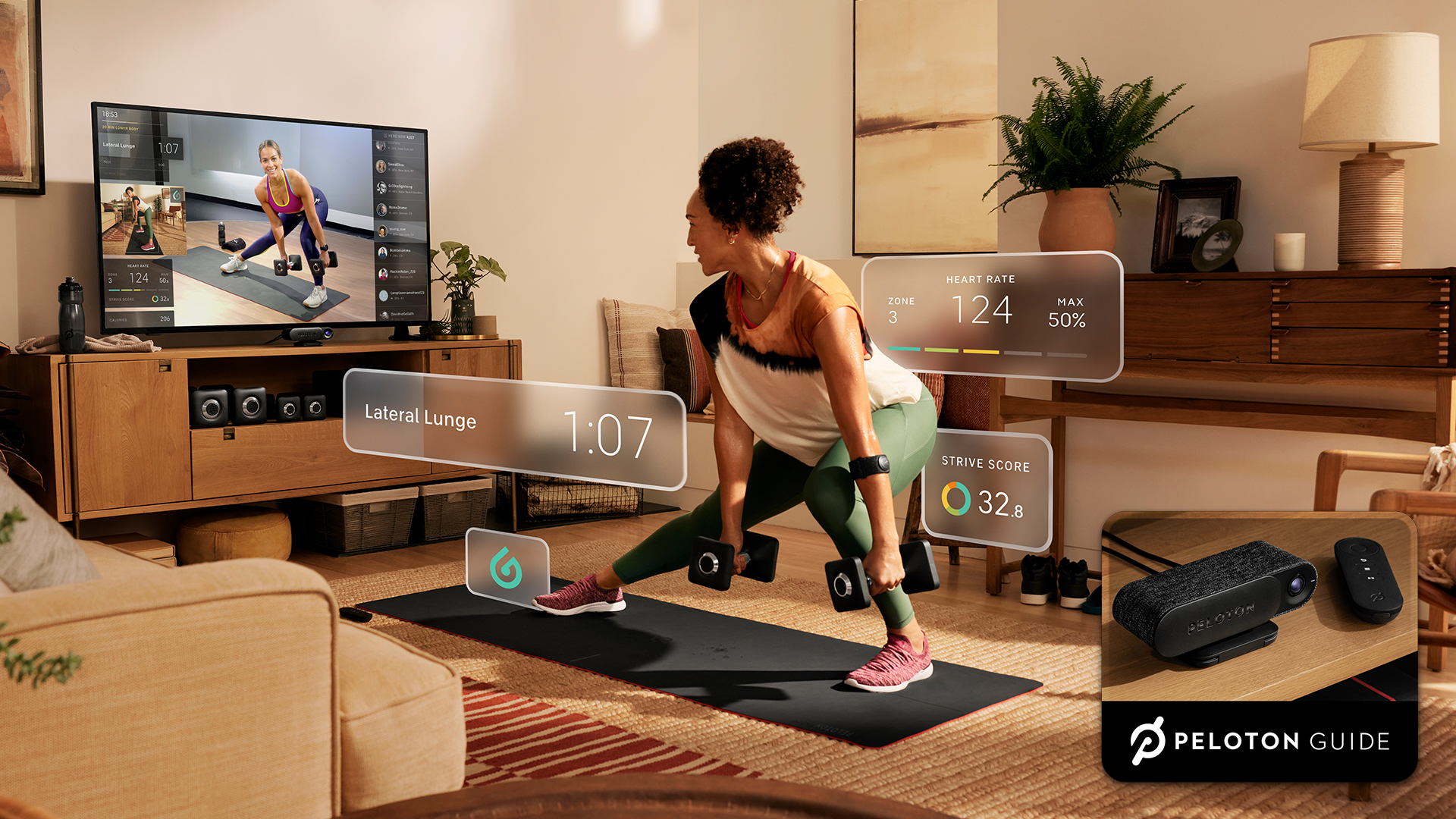You should stretch every day, even though your Fitbit or Garmin can’t record it
Fitness tech companies should encourage stretching more

Fitness tech companies such as Garmin, Peloton and Fitbit have an interesting relationship with stretching. Fitbit Premium and the Peloton app offer guided stretching classes, demonstrating moves on the screen for you to replicate at home, while the promo photos for the new Fitbit line of trackers (the Fitbit Inspire 3, Fitbit Sense 2 and Fitbit Versa 4) show happy people doing yoga while wearing their device of choice. Consequently, almost all fitness trackers likely have a 'yoga' activity profile, even if they don’t have a dedicated stretching one.
So what is this activity profile recording? Your heart rate, breathing, skin temperature and stress levels while you do the activity – in other words, the same stuff it always records. A wrist-mounted device cannot record how limber your muscles are getting, how deep into a stretch you can go, or where your pain threshold is for a particular stretch. The only real advantage is that your device will dutifully note down in your calendar that, yes, you did do your stretching today.
By way of contrast, when you're running, cycling and even HIIT training, your tracker or watch can provide metrics that are useful. You might set yourself a time to beat, a distance to travel, or a certain amount of calories to burn, and the watch can measure your progress as you travel towards this goal. The really good ones will have virtual pacing software to keep you on target or record your route to help you find your way.
There’s none of this interaction for stretching: the markers for progress are the lengthening of your muscles, the speed of your recovery, or the feeling of relief you get after shaking out the knots, none of which can be measured by a worn computer. Even guided classes, whether you find them on YouTube or on a dedicated subscription fitness service, offer no meaningful interaction: all you can do is watch the instructor on-screen, and try to copy their movements as closely as you can.
Initially, when I first saw the Peloton Guide, Peloton’s smart camera for at-home workouts, I thought its AI motion-tracking software might translate well to yoga or stretching classes. At the moment, the AI camera detects your movement and matches it to the instructor, as you fill up a gauge with every rep you do. Once you fill up the gauge, you can move on to the next exercise. Like every Peloton class, it's full of ways to measure your progress and beat both fellow classmates and your own performance.

No stretching classes have yet been forthcoming for the Guide’s interactive software, though, and I can see why: not only would it be difficult to program the Guide to detect the sheer variety of people’s different ranges of motion, but the device works by detecting a users' movement, so would not be able to monitor how long they're able to hold a pose for. Smart devices can't reliably record stretching exercises and encourage you to do them more often, or more effectively, in the same way they can for running or cycling.
Some brands have tried to come up with a smart-tech solution. Smart foam rollers, such as the Therabody Wave Roller, offer vibration settings and routines tailored to your needs. Research from the Journal of Sports Science and Medicine has found that “vibration foam rolling [sic] showed substantially greater improvements in pain perception and passive hip extension range of motion,” indicating there’s something here. It’ll also note down every time it’s used in the Therabody app automatically via Bluetooth.
However, there are limitations to what foam rollers are capable of, and at around five times the price of a standard roller, the Therabody Wave is a tool for dedicated athletes rather than everyday people who need to be encouraged to stretch more.
It would be great if future fitness trackers would encourage regular stretching, perhaps using a heat map of the human body's muscles, like Garmin Connect does for strength training. After a stretching session, you could tap a muscle group to check that it's been stretched by it seeing it turn a different color in the app. One can dream.
But even if it won't show up in your workout app or count towards your Strava goals, you should be stretching regularly, and not just for 20 seconds before exercise. From your hip flexors to your hamstrings, regular stretching practice can fight the effects of age-related muscular atrophy, improve circulation, reduce back pain and just make you feel so much better in the morning.
If you’re over the age of 30 and you’re sick of feeling like a smashed crab when you crawl out of bed, start looking for a 10-minute stretching routine online and one of our best massage guns.
Get daily insight, inspiration and deals in your inbox
Sign up for breaking news, reviews, opinion, top tech deals, and more.

Matt is TechRadar's expert on all things fitness, wellness and wearable tech.
A former staffer at Men's Health, he holds a Master's Degree in journalism from Cardiff and has written for brands like Runner's World, Women's Health, Men's Fitness, LiveScience and Fit&Well on everything fitness tech, exercise, nutrition and mental wellbeing.
Matt's a keen runner, ex-kickboxer, not averse to the odd yoga flow, and insists everyone should stretch every morning. When he’s not training or writing about health and fitness, he can be found reading doorstop-thick fantasy books with lots of fictional maps in them.